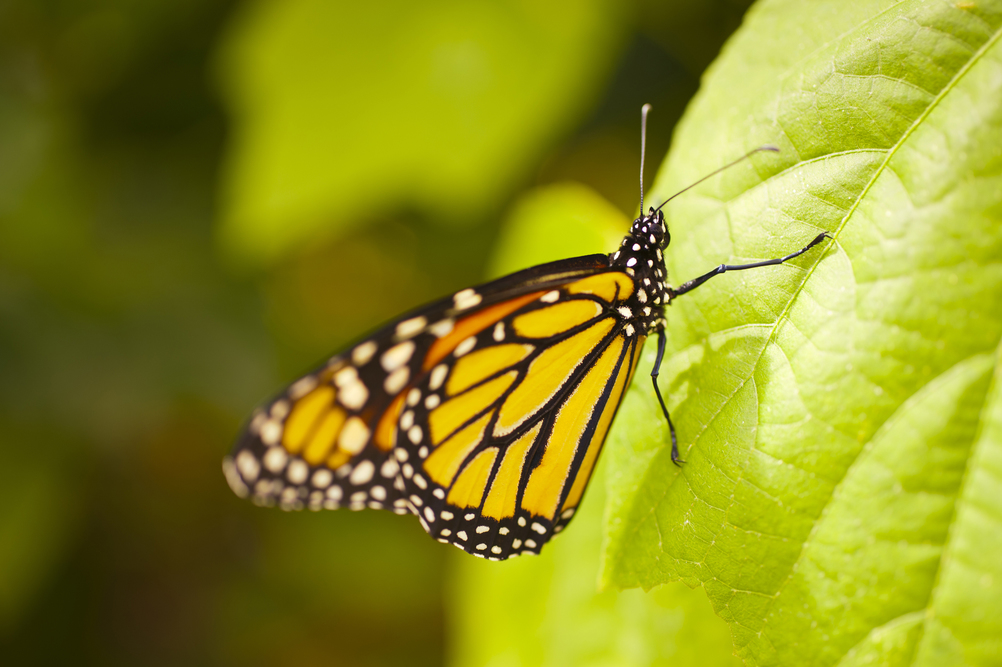Our children, grandchildren, and other future generations will likely outlive at least 10 native American species, making sightings a rarity that will eventually lead to extinction. Included in these species at risk are monarch butterflies, a bumblebee, and a host of other once-common wildlife — almost all of them dying out due to range of environmental (i.e. human-caused) factors.
The die-outs of these species are facilitated by farm pesticides, declining ocean health, climate change and dirty energy production, according to a new report by the Endangered Species Coalition.
The report, Vanishing: Ten American Species Our Children May Never See, highlights ten disappearing species and the causes of their dramatic population declines. The ten species profiled the report are the mountain yellow-legged frog, monarch butterfly, North Pacific right whale, great white shark, little brown bat, whitebark pine, rusty patched bumblebee, greater sage-grouse, polar bear, and the Snake River sockeye salmon.
“Snake River sockeye are among the highest and farthest migrating salmon on the planet – climbing 6,000 feet in elevation and 900 miles against the current to return to their spawning grounds,” said Sam Mace, Inland Northwest Program Director for the Save Our wild Salmon Coalition. “We are the last generation that can save these extraordinary fish from extinction.”
Nothing illustrates the decline of certain species better than the loss of the monarch butterfly, an insect once so common that up to a billion monarch butterflies used to blanket our fields and our skies each summer. In 2104, only about 33 million monarch butterflies remain – a decline of more than 90%.
“The monarch butterfly is a part of almost every child’s summer experience,” said Sarina Jepsen, endangered species program director at the Xerces Society. “The loss of such a widespread butterfly suggests that we are changing our landscape at an unprecedented scale.”
“When species like monarch butterflies and whitebark pine are in trouble, that means we’re all in trouble, because they’re leading indicators of the health of the planet,” said Frances Beinecke, President of the Natural Resources Defense Council. “By acting now to conserve these animals and plants for future generations, we will also be restoring our natural heritage and creating a safer, healthier world for all.”
Coalition member groups nominated wildlife species in the report and then a committee of distinguished scientists reviewed the nominations, and decided which species should be included in the report.
“Scientists agree that climate change is a huge threat in many direct and indirect ways to species diversity and survival,” said Dr. Jan Randall, Professor Emeritus of Biology at San Francisco State University, and chair of the scientific advisory committee for the report.
“As the situation for many species grows ever more dire, our direct actions are able to rescue some of them from extinction,” said Dr. Peter Raven, President Emeritus, Missouri Botanical Garden. “This list should inspire hope and at the same time lead us to devote full attention to the species most in need.”
We are not without hope; the report identifies everyday actions that people can take to help slow the disappearance of our nation’s iconic wildlife. “With each passing day, our children are less and less likely to experience the full beauty of nature and see the kind of wildlife that baby boomers, Gen Xers, and even Millennials experienced,” said Leda Huta, executive director of the Endangered Species Coalition. “We owe it to our future generations of Americans to protect our vanishing wildlife and the special places they call home.”

The wildlife situation is crazy. Within bike trails in our area there is a ton of work being done to try and save some of our local little creatures but I don’t think it is going to work. There are too many people who don’t care and just head off to trample in the woods (I do mountain biking) or they are off hunting during the off-seasons to care about anything other than what they want.
This is a really sad situation to think about. It’s hard to imagine life without the Monarch butterfly or a bumble bee. These species are linked to so many other things that we need on this planet to survive that I don’t understand why more isn’t being done to protect the precious things in our world.